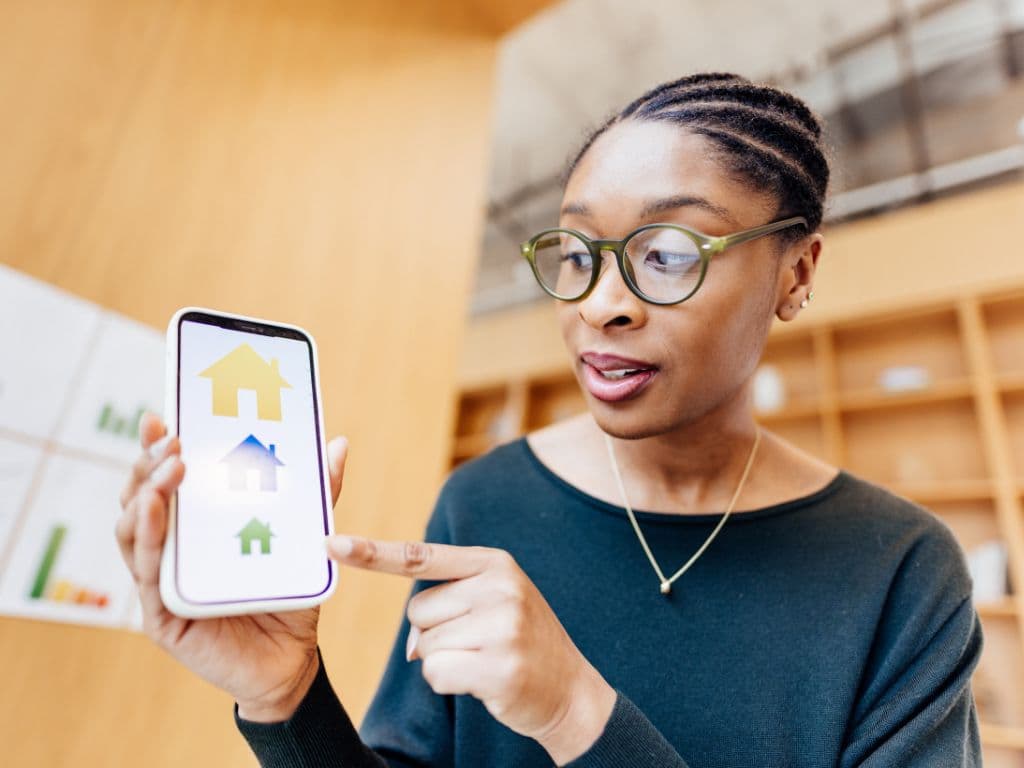Introduction
In the bustling heart of New York City, there is a transformation occurring in the field of education, fueled by the ever-evolving technological landscape. The integration of technology in the classroom is breaking down conventional barriers to learning and creating fresh opportunities for both educators and learners as we confront the obstacles of the modern era. The New York City Department of Education (NYC DOE) is committed to utilizing technology to transform education and ensure that it is accessible, engaging, and impactful for all students, regardless of their familiarity with current trends. This digital revolution is designed to provide students with the knowledge and skills necessary to thrive in the digital age.
This digital revolution is designed to provide students with the knowledge and skills necessary to thrive in the digital age. The use of technology in New York City schools is an indication of the city’s commitment to fostering an environment where learning is not limited and creativity is encouraged. Technology is employed to offer personalized educational experiences and interactive learning platforms.
Current Trends in NYC Classroom Technology Integration
Several key trends in technology integration are contributing to a more dynamic, engaging, and effective learning environment, reshaping the landscape of education in New York City.
Initiatives by the NYC Department of Education (DOE)
The New York City Department of Education (NYC DOE) has recognized the critical role of technology in preparing students for the future and has integrated it into the education system. A strategic plan has been developed by the NYC DOE, which outlines clear goals for technology integration. The plan emphasizes the enhancement of student learning outcomes and the development of digital literacy across all grades.
- Strategic Plan and Goals: This plan outlines the necessary steps for schools to create technologically enriched learning environments. It aims to leverage digital tools to improve instructional practices and student engagement, ensuring that every student benefits from a relevant and forward-thinking curriculum.
- Funding Allocations and Resources: The DOE has made significant investments to ensure that schools have access to the latest devices and infrastructure, such as high-speed internet access, interactive whiteboards, and personal devices like tablets and laptops. The DOE has made significant investments to ensure that schools have access to the latest devices and infrastructure, such as high-speed internet access, interactive whiteboards, and personal devices like tablets and laptops. This commitment aims to facilitate technology integration without being hindered by a lack of resources.
- Professional Development Programs: The DOE has invested in comprehensive professional development programs to recognize that effective integration of technology requires skilled educators. These initiatives empower teachers with the knowledge and tools necessary to effectively integrate technology into their teaching practices, transforming the traditional classroom into a dynamic learning environment.
Collaborative Efforts with Educational Technology Companies

A key component of New York public’s technology integration strategy is the collaboration between leading educational technology businesses and public schools. These partnerships have made it easier for cutting-edge resources and platforms that improve education to be adopted.
- Collaborations with Tech Giants: Organizations like as Apple, Google, and Microsoft have emerged as important players in this project, offering not just hardware but also access to a wide range of educational platforms and applications. These collaborations play a key role in introducing cutting-edge technology into the classroom, increasing accessibility and enhancing student engagement.
- Provision of Equipment and Educational Software: As a result of these partnerships, schools now have access to interactive software, computers, and tablets—all of which are necessary resources for developing a more engaging and customized learning environment. With the help of technology, students may investigate novel ideas at their own speed, which encourages curiosity and a love of learning.
- Assistance and Training for Teachers: The DOE and its corporate partners provide teachers with continuous assistance and training to guarantee that technology is used successfully. The goal of this professional development is to better prepare students for the challenges of the digital era by using technology into the curriculum in ways that improve learning outcomes.
Personalized and Interactive Learning Platforms
Interactive learning platforms represent a significant shift towards engaging and personalized educational approaches. In NYC classrooms, tools like Kahoot and Nearpod have become essential, transforming how educators deliver content and assess student comprehension.
These platforms facilitate active learning by involving students in quizzes, polls, and interactive lessons, fostering an engaging and inclusive classroom environment. Technology enables tailoring educational content to individual student needs through adaptive learning systems that adjust task difficulty based on performance, ensuring appropriate challenge and support.
The integration of digital tools enhances student participation, transforming learning from passive lecture reception to an interactive experience that promotes exploration, inquiry, and collaboration.
STEM/STEAM Education and Digital Literacy

NYC schools integrate technology into STEM (science, technology, engineering, and mathematics) and STEAM (including arts) education. This approach educates students for technology-driven professions and enhances learning experiences in these subjects. Technology forms a core part of STEM and STEAM curricula, with digital tools utilized for experiments, projects, and complex problem-solving, fostering creativity and innovation.
Schools develop students’ digital literacy skills, crucial for navigating the digital world safely and effectively, preparing them for digital age challenges and opportunities. The technology emphasis aims to equip students with skills necessary for excelling in technology-driven fields like coding, cybersecurity, and digital design.
Technology integration reshapes NYC’s educational landscape, offering new avenues for learning, exploration, and growth, focused on innovation, collaboration, and inclusivity, preparing students for technology’s pivotal role across all aspects of life. Continued evolution of educational technology promises further enhancements to engaging, accessible, and effective learning experiences for NYC students.
Challenges and Considerations
As New York City advances in integrating technology into classrooms, several challenges and considerations emerge, necessitating thoughtful solutions and strategic planning.
Addressing the Digital Divide
The digital divide remains a significant barrier, with disparities in access to technology and high-speed internet affecting students’ ability to participate fully in digital learning.
- Equitable Access: The DOE is implementing initiatives to ensure every student has access to the necessary technology, focusing on distributing devices and improving internet connectivity in underserved communities.
- Bridging the Gap: Partnerships with tech companies and non-profits play a crucial role in providing resources to those in need, aiming to level the playing field for all students across the city.
Cybersecurity and Online Safety Concerns
With increased technology use, ensuring the safety and privacy of students online has become paramount.
- Data Privacy: The DOE has established strict protocols for data protection, ensuring student information is secure and privacy is maintained in digital platforms.
- Responsible Use: Education around responsible technology use is integrated into the curriculum, teaching students about the importance of digital citizenship and online safety.
- Cybersecurity Education: Both educators and students receive training on cybersecurity practices, preparing them to recognize and respond to online threats effectively.
Funding and Resource Constraints
Sustainable funding and resource allocation are ongoing challenges, particularly as the demand for technology in education continues to grow.
- Budgetary Challenges: Identifying sustainable funding sources is critical to maintain and expand technology initiatives in schools.
- Resource Allocation: Efficient management of resources, including device maintenance and technical support, is essential for the longevity of technology programs.
- Public-Private Partnerships: The DOE continues to seek partnerships with the private sector to supplement funding and resources, enhancing the technology infrastructure in schools.
Future Directions and Innovations
Looking ahead, New York City’s educational technology landscape is poised for further innovation and expansion, promising to enrich learning experiences and open new avenues for student achievement.
Expansion of 1:1 Device Programs
The aim is to ensure every student has access to a personal device, facilitating personalized learning and equal opportunities for digital engagement.
- Implementation Strategies: Careful planning and execution are vital for the successful rollout of 1:1 device programs, including considerations for device management and internet access.
- Learning Continuity: These programs are crucial for supporting learning continuity, especially in circumstances that require remote learning, ensuring all students can continue their education without interruption.
Emerging Technologies and Immersive Learning Experiences
The integration of VR, AR, and MR into education promises to revolutionize the way subjects are taught, making learning an immersive experience.
- Innovative Learning Tools: These technologies offer students unparalleled opportunities to explore complex concepts and virtual environments, enhancing understanding and retention.
- Experiential Learning: By bringing lessons to life through immersive simulations, students can experience historical events, scientific phenomena, and artistic expressions in a completely new way, fostering a deeper connection to the material.
Professional Development and Teacher Training
Continuous learning and adaptation are essential for educators to leverage the full potential of technology in teaching.
- Ongoing Training: The DOE is committed to providing teachers with ongoing professional development opportunities, focusing on the latest educational technologies and pedagogical strategies.
- Support Networks: Creating communities of practice among teachers allows for the sharing of resources, strategies, and experiences, further enhancing the quality of technology integration in classrooms.
Data-Driven Decision Making and Assessment
Utilizing technology to gather and analyze data on student performance enables more personalized and effective educational strategies.
- Insightful Assessment: Technology facilitates the collection of detailed data on student learning, allowing educators to tailor instruction to meet individual needs and identify areas for intervention.
- Personalized Learning Paths: With access to real-time data, teachers can adjust learning paths for students, providing targeted support and enrichment opportunities to foster academic growth.
Conclusion
The integration of technology into New York City classrooms is an ongoing process that requires innovation, adaptation, and collaboration. This approach involves embracing current trends and anticipating future directions in digital education to ensure that students acquire the necessary skills, knowledge, and digital literacy for success in the 21st century.
Collaborative efforts among the Department of Education, schools, technology partners, and the community will be crucial in realizing the full potential of the digital transformation in education technology. It is important to acknowledge that New York City’s education system has made significant strides in navigating the challenges and opportunities presented by this transformation, and it can serve as a model for other education systems around the world.